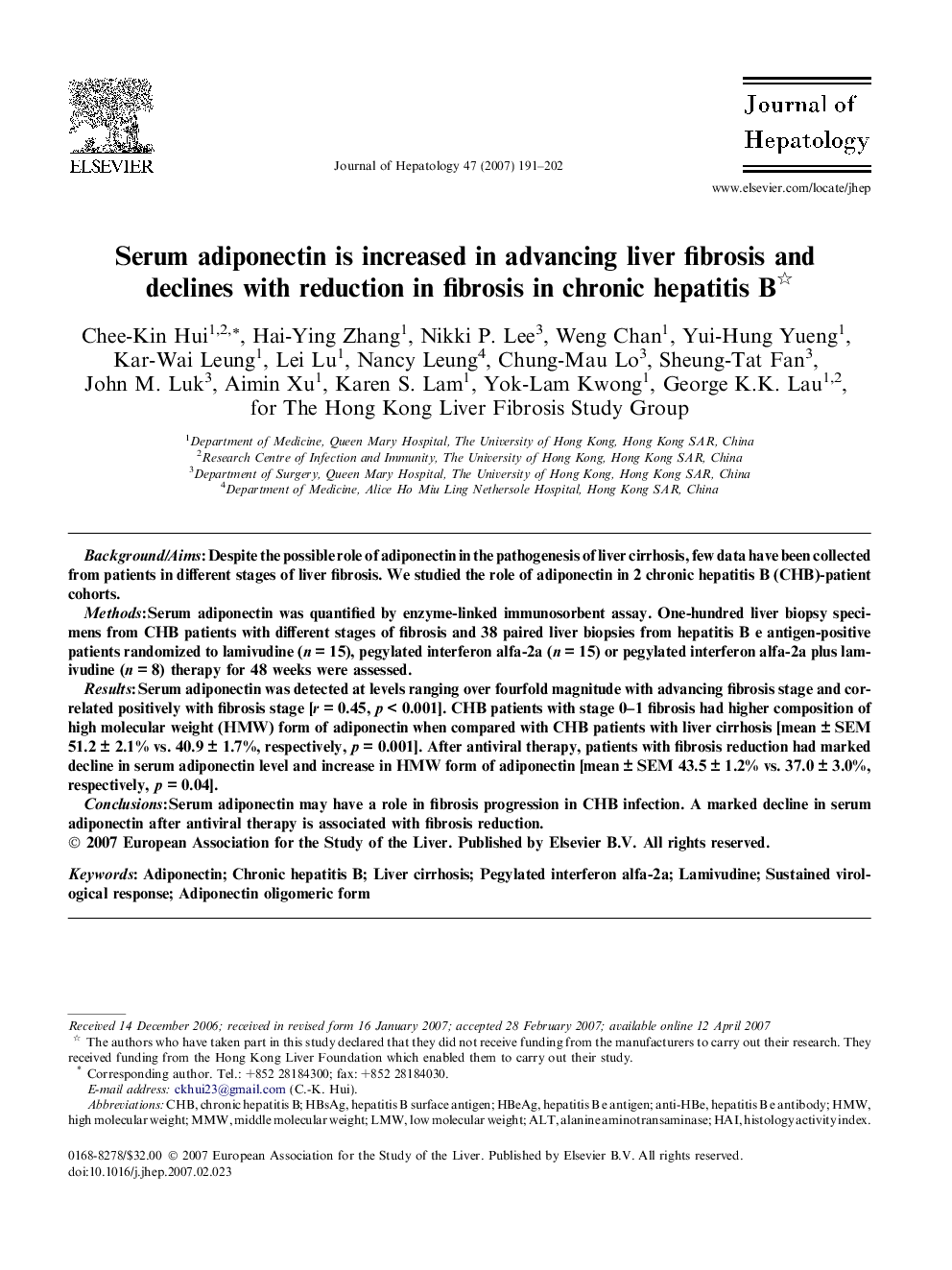| Article ID | Journal | Published Year | Pages | File Type |
|---|---|---|---|---|
| 3314649 | Journal of Hepatology | 2007 | 12 Pages |
Background/AimsDespite the possible role of adiponectin in the pathogenesis of liver cirrhosis, few data have been collected from patients in different stages of liver fibrosis. We studied the role of adiponectin in 2 chronic hepatitis B (CHB)-patient cohorts.MethodsSerum adiponectin was quantified by enzyme-linked immunosorbent assay. One-hundred liver biopsy specimens from CHB patients with different stages of fibrosis and 38 paired liver biopsies from hepatitis B e antigen-positive patients randomized to lamivudine (n = 15), pegylated interferon alfa-2a (n = 15) or pegylated interferon alfa-2a plus lamivudine (n = 8) therapy for 48 weeks were assessed.ResultsSerum adiponectin was detected at levels ranging over fourfold magnitude with advancing fibrosis stage and correlated positively with fibrosis stage [r = 0.45, p < 0.001]. CHB patients with stage 0–1 fibrosis had higher composition of high molecular weight (HMW) form of adiponectin when compared with CHB patients with liver cirrhosis [mean ± SEM 51.2 ± 2.1% vs. 40.9 ± 1.7%, respectively, p = 0.001]. After antiviral therapy, patients with fibrosis reduction had marked decline in serum adiponectin level and increase in HMW form of adiponectin [mean ± SEM 43.5 ± 1.2% vs. 37.0 ± 3.0%, respectively, p = 0.04].ConclusionsSerum adiponectin may have a role in fibrosis progression in CHB infection. A marked decline in serum adiponectin after antiviral therapy is associated with fibrosis reduction.
